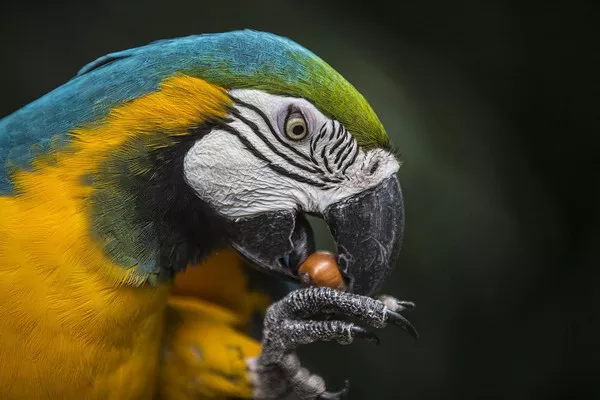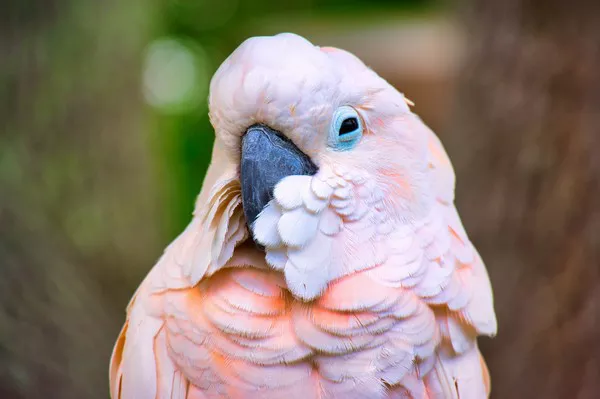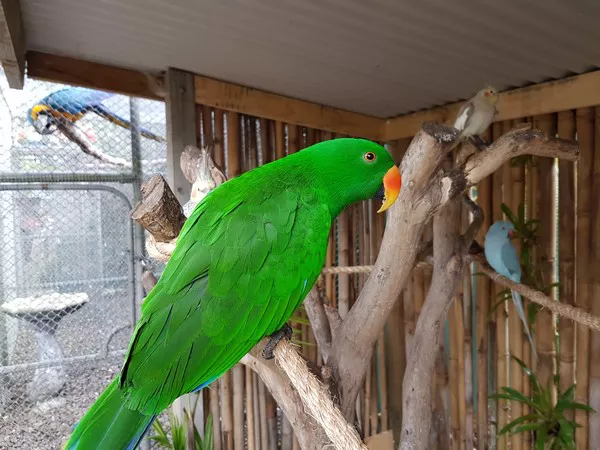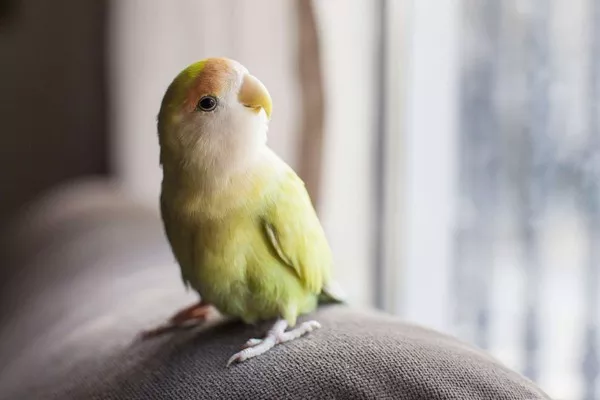Bird enthusiasts often wonder whether two popular pet bird species—cockatiels and sun conures—can coexist peacefully. Both species are cherished for their personalities, vibrant colors, and vocal abilities, making them appealing choices for avian companionship. However, each bird species has its unique characteristics, needs, and behaviors that influence their compatibility. In this article, we’ll explore the nature of cockatiels and sun conures, delve into their living habits, and examine whether these two birds can live harmoniously together.
Understanding Cockatiels: Characteristics and Behavior
Physical Appearance and Size
Cockatiels, native to Australia, are small to medium-sized parrots with a distinctive appearance. They typically have gray bodies with white wing patches, and their most striking feature is the bright yellow face adorned with orange cheek patches, particularly prominent in males. Cockatiels have a crest of feathers on top of their heads that they raise or lower based on their mood—whether curious, excited, or agitated. They usually weigh between 80 to 120 grams and measure about 12 to 14 inches in length, including their tail.
Personality and Temperament
Cockatiels are known for their gentle and affectionate nature, making them excellent companions. They are social birds that thrive on interaction with their owners and other birds. Cockatiels are often described as being relatively easy-going, and they can bond closely with their human caregivers. Unlike some parrot species, cockatiels are less likely to be aggressive, though individual personalities vary.
These birds are also known for their whistling and mimicking abilities. While they can learn to talk, cockatiels are more famous for their melodious whistles and tunes. Male cockatiels are typically more vocal and may be more likely to learn to mimic sounds or words than females.
Social Needs and Interaction
Cockatiels are flock-oriented birds, which means they enjoy being in the company of others, whether humans or other birds. They are not solitary by nature and can become lonely and depressed if left alone for extended periods. For this reason, many cockatiel owners opt to keep them in pairs or groups.
In the wild, cockatiels live in large flocks and are used to constant social interaction. This social inclination often translates to a need for regular attention and mental stimulation in a domestic setting. Cockatiels enjoy toys, games, and challenges that engage their minds and keep them occupied.
Understanding Sun Conures: Characteristics and Behavior
Physical Appearance and Size
Sun conures, hailing from South America, are medium-sized parrots renowned for their brilliant plumage. These birds are a visual spectacle, with vibrant yellow and orange feathers dominating their bodies, complemented by shades of green and blue on their wings and tails. The sun conure’s striking coloration makes it one of the most recognizable and sought-after parrots in the pet trade. They are slightly larger than cockatiels, with an average length of about 12 inches and a weight ranging from 100 to 130 grams.
Personality and Temperament
Sun conures are known for their exuberant personalities. These birds are highly energetic, playful, and curious, constantly exploring their environment. They are also very affectionate and form strong bonds with their owners, often becoming quite attached and even demanding of attention.
However, sun conures are also known for their loud vocalizations. They are among the noisiest parrot species, with a piercing call that can be heard from a great distance. This trait can be a drawback for some bird owners, especially those living in apartments or close quarters where noise might be an issue.
Despite their loud nature, sun conures are very social and thrive on interaction. They are intelligent birds that require plenty of mental stimulation and physical activity. Without adequate attention and engagement, sun conures can become bored and may develop behavioral problems, such as feather plucking or excessive screaming.
Social Needs and Interaction
Much like cockatiels, sun conures are flock birds with a strong need for social interaction. They are not suited to being left alone for long periods and can become very attached to their human caregivers. Sun conures enjoy a wide range of activities, from playing with toys to learning tricks, and they benefit greatly from regular training sessions that challenge their intellect.
Sun conures are also known to be somewhat territorial, especially during breeding seasons. They can exhibit protective behaviors toward their chosen companion, which might be another bird or their human owner. This territoriality is an important factor to consider when introducing a sun conure to a household with other birds.
Comparing Cockatiels and Sun Conures: Key Differences and Similarities
Energy Levels and Activity
When comparing cockatiels and sun conures, one of the most notable differences is their energy levels. Cockatiels, while playful, tend to be more laid-back and less hyperactive compared to sun conures. They enjoy playtime and exercise but are equally content to sit quietly on a perch or interact gently with their owners.
Sun conures, on the other hand, are highly active birds that require more space to move around and plenty of toys to keep them occupied. Their energetic nature means they need more physical and mental stimulation throughout the day. Sun conures are also more likely to engage in high-energy behaviors such as climbing, hanging upside down, and exploring every nook and cranny of their environment.
Vocalizations and Noise Levels
Noise levels are another significant difference between these two species. Cockatiels are relatively quiet compared to sun conures. While they do chirp and whistle, their sounds are generally pleasant and not overly loud. This makes cockatiels a better choice for those who prefer a quieter bird.
In contrast, sun conures are known for their loud, screeching calls, which they use to communicate with their flock or when they feel excited or alarmed. Their vocalizations can be piercing and frequent, making them a less suitable option for noise-sensitive environments.
Social Compatibility and Interaction
Both cockatiels and sun conures are social birds that enjoy interaction, but their approaches to socialization can differ. Cockatiels are generally more tolerant and easy-going around other birds, making them more likely to get along with different species, including other cockatiels, budgies, or even finches. They are less likely to display aggressive or territorial behavior, particularly if they have been properly socialized from a young age.
Sun conures, however, can be more territorial and possessive, especially when it comes to their favorite person or space. While they can coexist with other birds, sun conures may display dominance behaviors, especially if they feel threatened or if their space is invaded. Their strong personalities can sometimes lead to conflicts with more docile birds like cockatiels.
Housing Cockatiels and Sun Conures Together: Considerations and Challenges
Cage Size and Environment
When considering housing cockatiels and sun conures together, cage size and environment are critical factors. Both species require spacious cages that allow them to spread their wings, climb, and play. However, because sun conures are more active, they benefit from even larger enclosures where they can engage in more dynamic activities.
A large, flight-sized cage is recommended if you plan to house these two species together. The cage should be equipped with multiple perches, toys, and climbing structures to cater to both birds’ needs. It’s also essential to provide separate feeding stations and water sources to prevent competition or aggression during feeding times.
Creating a stimulating environment with plenty of toys, foraging opportunities, and mental challenges is crucial for keeping both birds happy and occupied. Cockatiels may enjoy softer toys and items they can shred, while sun conures might prefer more interactive toys that require problem-solving.
Monitoring Interaction and Socialization
Introducing cockatiels and sun conures to each other requires careful monitoring and gradual socialization. It’s important to introduce the birds in neutral territory, outside of their cages, where neither bird feels their space is being invaded. Start with short, supervised interactions, observing their body language and behavior closely.
Look for signs of stress or aggression, such as raised feathers, hissing, lunging, or biting. If either bird displays these behaviors, it’s essential to separate them immediately and try reintroducing them more slowly over time. Positive reinforcement, such as treats or praise, can help encourage friendly interactions.
Even if the birds seem to get along well initially, it’s crucial to continue monitoring their interactions regularly. Birds can develop new behaviors as they mature or as their environment changes, so ongoing supervision is necessary to ensure their continued compatibility.
Potential Risks and Issues
While it is possible for cockatiels and sun conures to live together harmoniously, there are potential risks and issues to be aware of. The most significant concern is the difference in size and strength between the two species. Sun conures, being slightly larger and more robust, can inadvertently harm a cockatiel during play or if an argument occurs.
Sun conures’ stronger beaks can deliver a more damaging bite, which could injure a cockatiel if they were to engage in a scuffle. Additionally, the territorial nature of sun conures can lead to dominance issues, particularly if they feel their space or resources are threatened.
See Also: What Do Sun Conures Eat in the Wild?
It’s also important to recognize that birds, like people, have individual personalities. Some cockatiels and sun conures may form close bonds and enjoy each other’s company, while others may never fully accept each other. Bird owners must be prepared for the possibility that their birds may need to be housed separately, even after attempts at socialization.
Tips for Successful Co-habitation
Gradual Introduction and Bonding
To increase the chances of success when housing cockatiels and sun conures together, it’s crucial to take a gradual approach to their introduction. Begin by allowing the birds to see and hear each other from a distance, perhaps in separate cages placed in the same room. This allows them to become familiar with each other’s presence without direct contact.
Over time, you can allow them to spend supervised time together outside of their cages, ensuring that each bird has a safe space to retreat to if they feel uncomfortable. Watch for signs of mutual curiosity and positive interaction, such as preening or playing near each other.
It’s also helpful to engage in joint activities that encourage bonding, such as offering treats simultaneously or playing with interactive toys that both birds can enjoy together. Patience and consistency are key, as it may take several weeks or even months for the birds to build a comfortable relationship.
Providing Ample Space and Resources
To minimize potential conflicts, ensure that your birds have ample space and resources. A spacious cage with plenty of room for both birds to move freely is essential. Providing multiple perches, feeding stations, and toys reduces the likelihood of competition and territorial disputes.
Consider setting up separate play areas outside of the cage as well, where each bird can enjoy some individual time and space. This helps prevent one bird from becoming overly dominant or possessive of shared spaces.
Addressing Behavioral Issues
Even with the best efforts, behavioral issues can arise when housing different bird species together. If you notice signs of aggression, such as biting, chasing, or lunging, it’s important to address these behaviors immediately. Separating the birds temporarily can give them time to cool off and reduce tension.
Behavioral training, using positive reinforcement techniques, can also help manage and correct problematic behaviors. Rewarding good behavior with treats, praise, or attention encourages the birds to engage in positive interactions.
In some cases, it may be necessary to consult with an avian behaviorist or a veterinarian with experience in bird behavior. They can provide guidance on managing conflicts and ensuring the well-being of both birds.
Conclusion:
The question of whether cockatiels and sun conures can get along does not have a one-size-fits-all answer. While it is possible for these two species to coexist peacefully, it requires careful planning, monitoring, and a deep understanding of each bird’s needs and personality.
Cockatiels, with their gentle and easy-going nature, are generally more tolerant of other birds, while sun conures, with their bold and territorial tendencies, may pose more of a challenge in a mixed-species environment. The key to success lies in providing a spacious and enriching environment, taking a gradual approach to introductions, and being prepared to intervene if conflicts arise.
Ultimately, whether these two species can live together harmoniously depends on the individual birds involved and the commitment of their owner to ensuring a positive and safe living environment for both. With patience, dedication, and the right conditions, cockatiels and sun conures can form a friendly and enriching relationship, bringing joy and companionship to their shared household.
Related Topics:
























